// Platform News & Updates
Raynet One UEM 3.2 – More control. Less effort. Maximum security.
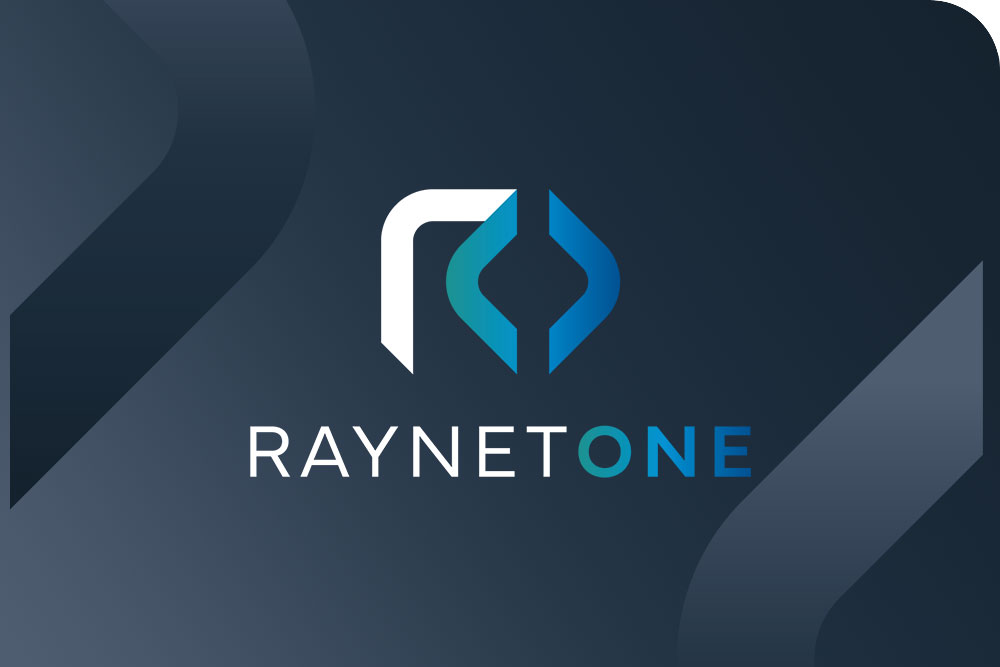
Date: 15. April 2025
Smart Endpoint Management redefined
The latest version of Raynet One UEM sets new standards in IT and Cybersecurity Management. With new intelligent features, Raynet One UEM 3.2 is aimed squarely at IT administrators, Security Teams and strategic decision-makers – for more transparency, efficiency and security in endpoint management.
Advanced Security Patch Reporting
Raynet One UEM now provides detailed and comprehensive reporting on the installation status of OS-level patches for Windows, ensuring feature parity with classic RayManageSoft implementations. Windows devices are scanned using an online mode (Windows Update Agent scan), delivering up-to-date insights into patch compliance. This allows IT administrators to proactively identify missing updates, track deployment progress, and address potential security risks before they become critical issues.
The results can be reviewed and analyzed through standard reports available in the default installation. These reports offer structured overviews of installed patches, making it easier for system administrators to maintain compliance with security policies and regulatory requirements.
For even more flexibility, you can leverage Raynet One Data Hub to customize reports, enabling the creation of tailored dashboards, cockpits, and executive summaries that align with specific business and security needs.
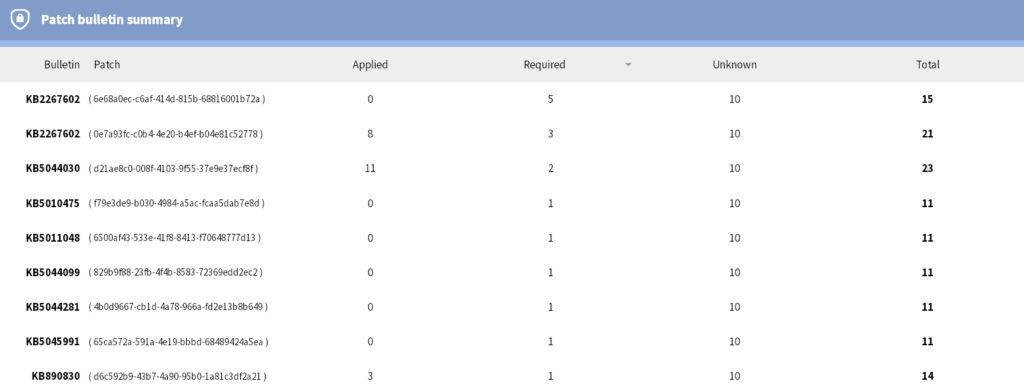
Security and Patch Analyzer and Vulnerability Recommendations for Third-Party Patches
This release further enhances the consolidation of data from patch detection tools, the Technology Catalog, and the Package Store. Raynet One UEM 3.2 thus provides a streamlined approach to vulnerability management, enabling faster responses to security risks and improving overall patch management efficiency, all within a single, unified view for administrators.
The new consolidated view includes:
- Unpatched software and detected vulnerabilities
- Available patching options, which highlights any newer software versions that are available and could resolve vulnerabilities.
- Devices needing inspection, informing which devices require further inspection or may be vulnerable due to outdated versions.
- Vulnerabilities closed by a newer version, which shows which new software versions address the detected vulnerabilities.
User-based Deployment/Assignment of Packages
Raynet One UEM now offers the option to assign software packages to users rather than directly to devices. This provides administrators with more flexibility, allowing them to manage assignments at a higher level without needing to track which user owns which machine. Raynet One UEM handles the dynamic user-device assignment process, simplifying deployment workflows.
Users can be imported or manually configured, and during inventory, devices are discovered, with their primary users identified. This ensures that software assignments are automatically linked to users, rather than specific devices. Administrators can further customize the behavior through the following options:
- Direct configuration of the associations between users and their devices.
- Importing Relationships from Active Directory.
- Integrate with third-party systems for more advanced user-device relationship management via a dedicated REST API.
This feature is fully integrated with existing deployment tools, meaning administrators can continue using the same interface for both user and device group management without the need for additional tools. This ensures consistent and efficient experience when managing package assignments.
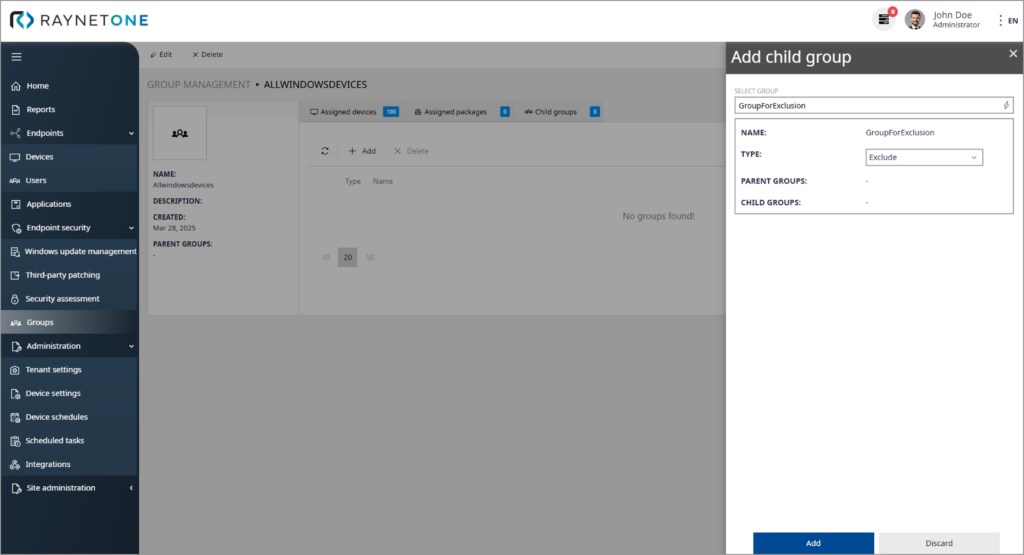
New Operators for Dynamic Conditions
Raynet One UEM 3.2 enhances dynamic condition filtering by introducing four new operators for software- and hardware-based targeting.
New operators are:
- Product is installed in a specific location
- Product is not installed in a specific location
- Product has been recognized by its install location
- Product has not been recognized by its install location
- Device architecture
These new conditions significantly improve detection accuracy and dynamic grouping, enabling more granular software deployment and policy enforcement. Additionally, they simplify UI configuration by reducing the need for complex scripting or manual filtering.
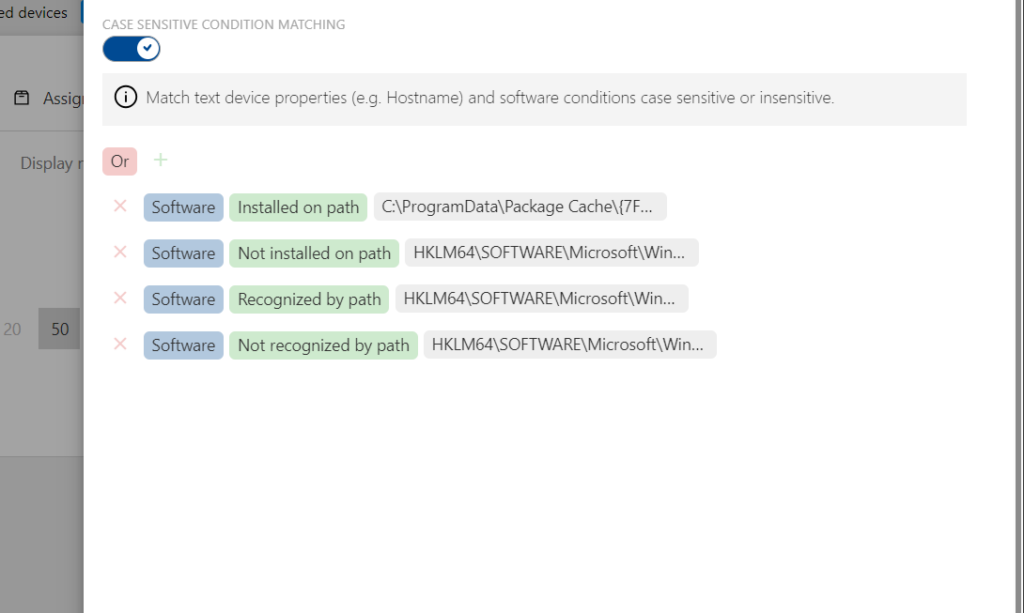
Have fun exploring, trying out and using the new functions and improvements!


